Whenever we speak of Indian Constitution, the one name that pops first in mind is of, Dr. Bhimrao Ambedkar – father of Indian Constitution. And while Sir B. R. Ambedkar and his principles played a major role in drafting our constitution, there were 15 Indian women who made a considerable contribution to the draft but unfortunately have not received their due share of recognition.
On this Republic Day, let us remember those women who helped us build our constitution – a set of fundamental principles, established precedents which governs India and its people.
- Sarojini Naidu
She was more popularly known as “Nightingale of India” and participated in freedom struggle of India against the British, and is specially know for her participation in the Non-Cooperation Movement. Mahatma Gandhi used to lovingly called her bulbul. She was the first women to become the governor of an Indian state. She also played a major role in establishing the Women’s Indian Association in 1917. She was talented in the field of literature and in 1914 she was elected a fellow of the Royal Society of Literature. Her involvement in freedom struggle brought her a number of prison sentences (1930, 1932 and 1942–43).
2. Vijaya Lakshmi Pandit
For someone who hailed from a political family, Vijaya Lakshmi Pandit was the first ever woman cabinet minister and first Asian and first woman president of UN General Assembly in September 1953. She was sister of Jawaharlal Nehru and was born in Allahabad on 18th August,1900. She was sentenced to jail by the British for her participation in freedom struggle movement, in 1932-1933, 1940, and 1942-1943. She resigned in 1939 from Congress Assembly to protest against the British government’s declaration that India was a participant in World War II.
3. Purnima Banerjee
Purnima Banerjee had actively participated in Quit India Movement and Satyagraha. Purnima Banerjee’s speeches in the Constituent Assembly on socialist ideology, drew lot of attention. She even completed her Bachelor in Arts in jail. She was the secretary of the Indian National Congress committee in Allahabad, Uttar Pradesh. She was responsible for engaging and organizing trade unions, kisan meetings and work towards greater rural engagement.
4. Malati Choudhury
Malati devi was known for her efforts in upliftment for Scheduled Castes, Scheduled Tribes, other backward classes (OBC) and underprivileged sections of society. Malati Choudhury was born in 1904 to a distinguished family in East Bengal (now Bangladesh). In the year 1921, at the age of 16, Malati Choudhury was sent to Santiniketan where she got admitted to Viswa-Bharati. In 1933, she formed Utkal Congress Samajvadi Karmi Sangh along with her husband, Nabakrishna Choudhury (once Chief Minister of Orissa) which later came to be known as the Orissa Provincial Branch of the All India Congress Socialist Party. In 1934, she joined Gandhiji in his famous “padayatra” in Orissa. She set up several organisations such as the Bajiraut Chhatravas for the upliftment of vulnerable communities in Odisha. She protested against the proclamation of Emergency by Indira Gandhi and was eventually imprisoned.
5. Sucheta Kripalani
Sucheta was born in Ambala in Haryana on 25 June, 1908. was an Indian freedom fighter and politician. She was India’s first woman Chief Minister, serving as the head of the Uttar Pradesh government from 1963 to 1967. she came to the forefront during the Quit India Movement. She later worked closely with Mahatma Gandhi during the Partition riots. She accompanied him to Noakhali in 1946. She was one of the few women who were elected to the Constituent Assembly and was part of the subcommittee that drafted the Indian Constitution.
6. Renuka Ray
Renuka Ray was a freedom fighter. She met Gandhi at the age of 16 and this had a profound effect on her. In 1934 aslegal secretary of the AIWC she submitted a document titled ‘Legal Disabilities of Women in India; A Plea for a Commission of Enquiry’. This articulated the AIWC’s disappointment with the treatment of the Sharda Bill and their commitment to legal review of the situation of women before the law in India. Renuka argued for a uniform personal law code, saying that the position of Indian women was one of the most iniquitous in the world. From 1943 to 1946 she was a member of the Central Legislative Assembly, then of the Constituent Assembly and the Provisional Parliament. In 1952–57 she served on the West Bengal Legislative Assembly as Minister for Relief and Rehabilitation. In 1957 and again in 1962 she was Member for Malda of the Lok Sabha. She was also President of the AIWC in 1952, served on the Planning Commission and on the Governing Body of Visva Bharati University in Shanti Niketan. She served as a Minister for Relief and Rehabilitation. She established the All Bengal Women’ Union and the Women’s Coordinating Council. Her memoir is titled My Reminiscences (1982).
7. Rajkumari Amrit Kaur
Amrit Kaur was born on 2 February 1889 in Lucknow, Uttar Pradesh, India. She was the first health minister of India and served for ten years in the capacity. She was an eminent Gandhian, a freedom fighter, and a social activist. Kaur was also a member of the Constituent Assembly, the body that framed the constitution of India. She was also jailed for her participation in the Dandi March and the Quit India Movement led by Gandhi. She was also a social activist and worked extensively in doing away with the child marriage and the purdah system.
8. Begum Aizaz Rasul
Begum Aizaz Rasul was the only Muslim woman in the Constituent Assembly of India that drafted the Constitution of India. Born into the princely family of Malerkotla, she was married at a young age to Nawaab Aizaz Rasul. In 1946, she was elected to the Constituent Assembly of India and was one of 28 Muslim League members who finally joined. She was the only Muslim woman in the Assembly. In 1950, the Muslim League in India dissolved and Begum Aizaz Rasul joined the Congress. She was elected to the Rajya Sabha in 1952 and was a member of the Uttar Pradesh Legislative Assembly from 1969 to 1990. Between, 1969 and 1971, she was the Minister for Social Welfare and Minorities. In 2000, she was awarded a Padma Bhushan for her contribution to social work.
9. Kamla Chaudhry
Kamla Chaudhry was born on 22 February 1908 in Lucknow. During the 1930 Civil disobedience movement, Chaudhry joined the Indian National Congress. Since then she was actively involved in the Indian Independence Movement and was imprisoned by the British authorities multiple times. She was an elected member of the Constituent Assembly of India and after the constitution was adopted she served as a member of the Provincial Government of India till 1952. She was also a member of the Uttar Pradesh State Social Welfare Advisory Board. In 1962, Chaudhry became a member of the 3rd Lok Sabha after winning the Indian general election, 1962 from Hapur as an official candidate of the INC. Gender discrimination, exploitation of peasants and poor condition of widows were main themes in her works.
10. Durgabai Deshmukh
Durgābāi Deshmukh, also called as Lady Deshmukh (15 July 1909 – 9 May 1981) was an Indian freedom fighter, lawyer, social worker and politician. She was a member of the Constituent Assembly of India and of the Planning Commission of India. She was a public activist for women’s emancipation, she founded the Andhra Mahila Sabha (Andhra Women’s Conference) in 1937. She was also the founder chairperson of the Central Social Welfare Board. Durgabai Deshmukh authored a book called The Stone That Speaketh.
11. Hansa Jivraj Mehta
Hansa Jivraj Mehta (1897–1995) was a reformist, social activist, educator, independence activist, and a writer. She organized picketing of shops selling foreign clothes, liquor and participated in other freedom movement activities as per the advice of Mahatma Gandhi. She was even arrested and sent to jail by the British. She was elected to Bombay Schools Committee in 1926 and became president of All India Women’s Conference in 1945–46. In her presidential address at the All-India Women`s Conference convention held in Hyderabad, she proposed a Charter of Women`s Rights. Hansaben was one among 15 women who were part of the constituent assembly that shaped India’s laws.
12. Ammu Swaminathan
Ammu Swaminadhan (1894–1978) was a social worker and political activist during the Indian independence movement. Swaminathan was an ardent follower of Mahatma Gandhi and actively participated in the non-violence protest led by Gandhi. And like others she too was slightly critical about the Constitution once it was drafted as she believed that it was very long. . After independence, she served as a member of the Constituent Assembly of India. This distinction was certainly conferred on her mainly because she was a woman, at a time when few Indian women had even remote engagement with politics, but she did read a few formal speeches and also participates in some debates. Later, in 1952, She was elected a member of the Rajya Sabha from Madras State. She was associated with several cultural and social organizations, and served as President of the Bharat Scouts and Guides from November 1960 to March 1965. She was also selected as ‘Mother of The Year’ in 1975 on the inauguration of International Women’s Year.
13. Dakshayani Velayudhan
Dakshayani Velayudhan (4 July 1912 – 20 July 1978) was a parliamentarian and leader of the Depressed Classes. Belonging to the Pulaya community, she was among the first generation of people to be educated from the community. She holds several distinctions including becoming the first woman from her community to wear an upper cloth, the first dalit woman graduate in India, a science graduate, a member of the Cochin Legislative Council and of being one of nine female members of the Constituent Assembly of India. Although a staunch Gandhian, Dakshayani sided with B R Ambedkar on many issues relating to the Scheduled Castes during the Constituent Assembly debates. She agreed with Ambedkar giving up the demand for separate electorates arguing instead for ‘moral safeguards’ and the immediate removal of their social disabilities.
14. Leela Roy
Leela Roy was born on 2 October 1900. She was a radical leftist politician and reformer, and a close associate of Netaji Subhash Chandra Bose. She took part in the Civil Disobedience Movement and was imprisoned for six years. In 1938, she was nominated by Congress President, Subhas Chandra Bose to the National Planning Committee of the Congress. I In 1942, during the Quit India Movement both she and her husband were arrested and her magazine was forced to cease. On her release in 1946, she was elected to the Constituent Assembly of India.
15. Annie Mascarene
Annie Mascarene (6 June 1902- 19 July 1963) was an Indian freedom fighter and Member of Parliament from Thiruvananthapuram, Kerala. was born into a Latin Catholic family. Mascarene was one of the first women to join the Travancore State Congress and became the first woman to be part of the Travancore State Congress Working Committee. She was the first woman MP from Kerala. Prior to her election to Parliament, Mascarene had been member of the Travancore-Cochin Legislative Assembly from 1948—52 and had served briefly as Minister in Charge of Health and Power in the Parur T K Narayana Pillai Ministry during 1949-1950. She was also one of the members of the Constituent Assembly of India and served on its select committee that looked into the Hindu Code Bill.





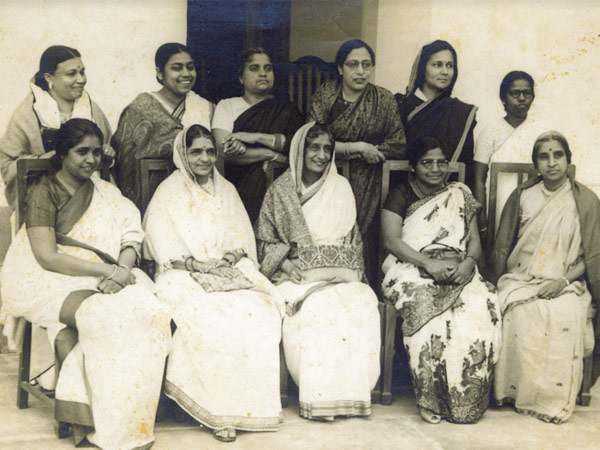
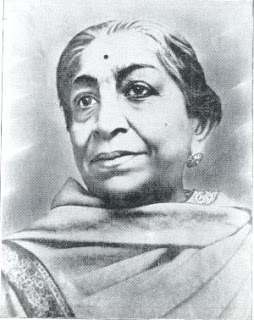
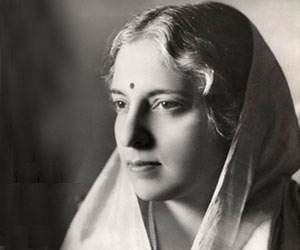
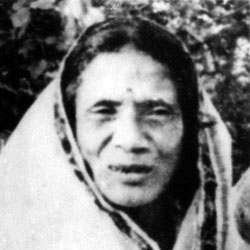
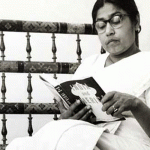
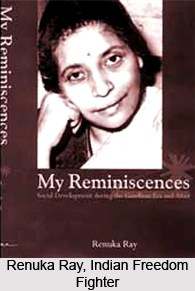
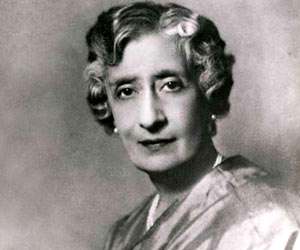
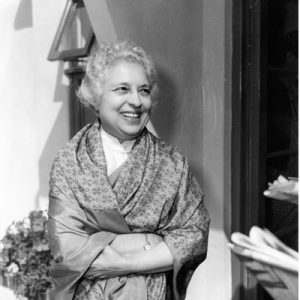
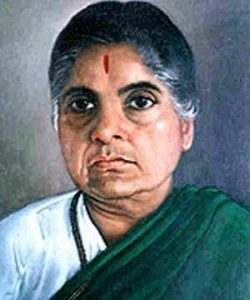
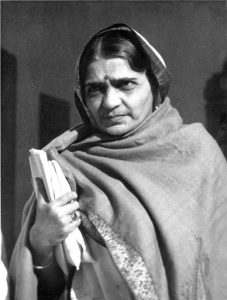
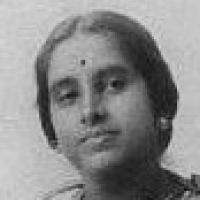


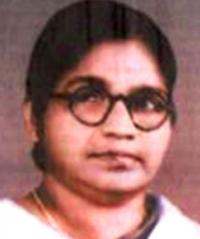
,